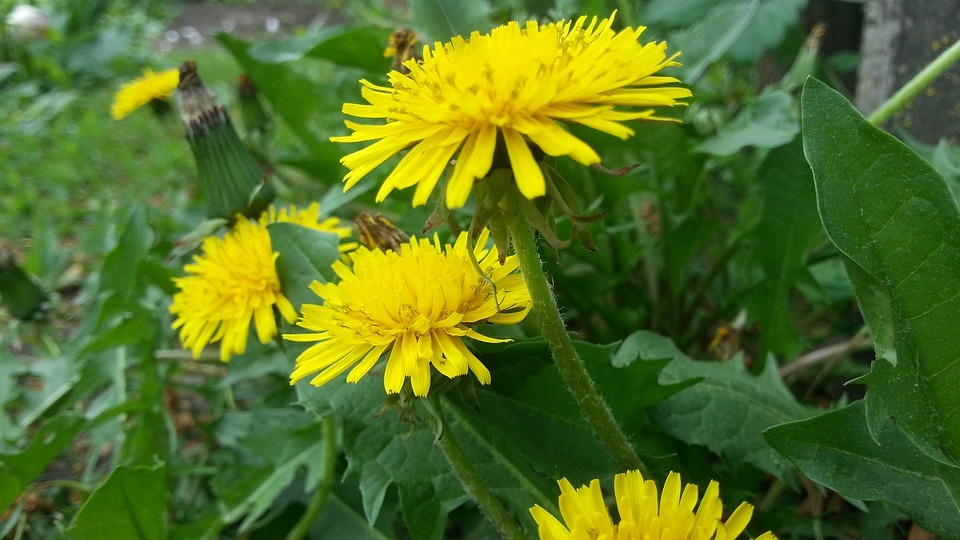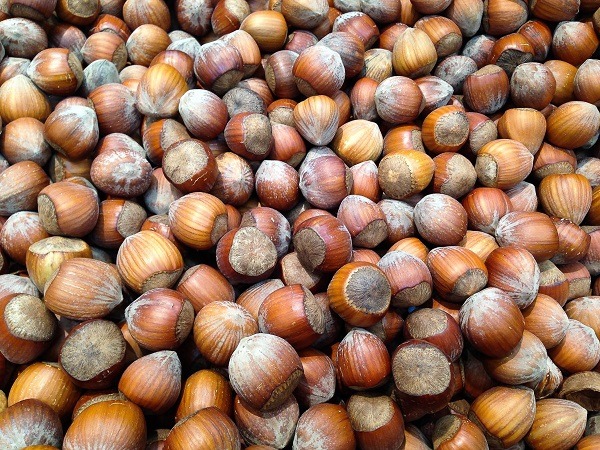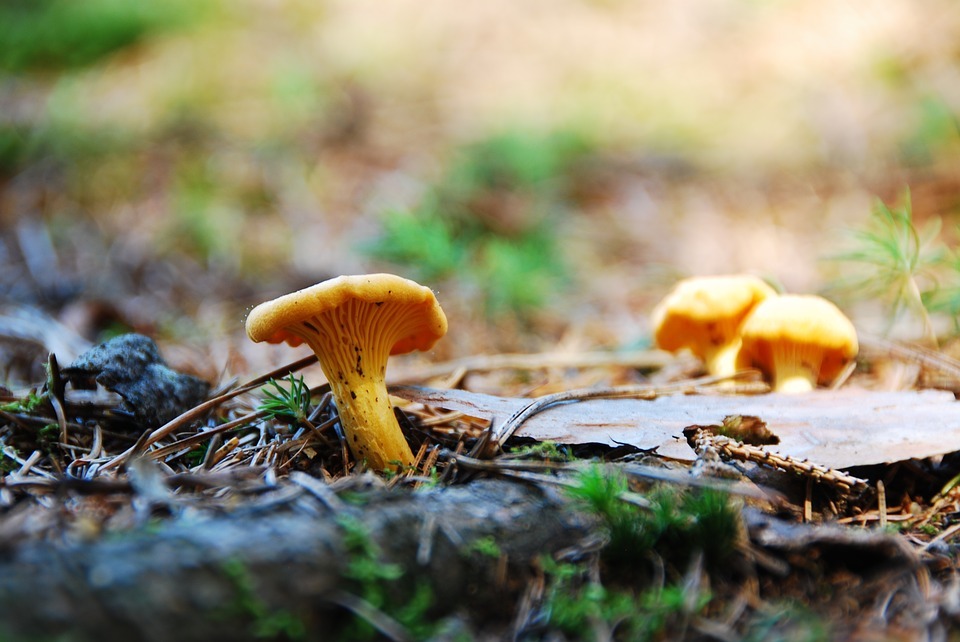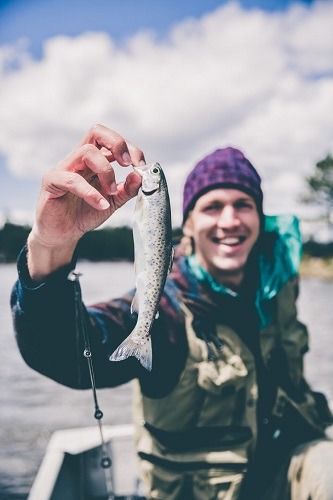A big part of living for a few days in the wild is being able to look for and prepare food straight from the earth. There are several types of food readily available in the wilderness, from greens and berries to fish and small animals. You can find and enjoy your food in the wild – you just need to know what and how! The availability of food depends on the season, but no matter what season it is, there will be foods that are available. Here are some of the ways you can find your own meals and snacks in the wild:
1. Forage for edible greens
If you’re not aware, wild greens are actually more vitamin-packed than commercially farmed greens. Plus, the flavors are more intense than the greens that can be purchased at the grocery. These greens are seasonal. You can use dandelion leaves for a peppery kick, then mix in generous amounts of chickweed for a delicate flavor. Wood sorrel can add a lemony flavor, while wild onion adds an oniony taste (obviously). Dress it up with young flowers of wild violets, dandelion, and primrose. Check out the other greens you can forage for eating here. Berries and fruits are a great choice too, and most probably, you are very familiar with them.
Beware, though, that even if there are many wild plants that are edible and nutritious, many are poisonous and even deadly. Don’t eat plants unless you know its identity. There are easy ways to identify which plants are edible. Usually, poisonous plants have milky or oddly-colored sap and leaves in groups of threes. If the stem of the plant has a bitter scent that resembles almonds, it’s a dangerous plant. Avoid those with spurs in colors like purple, black, or pink. Also, if the plant has pointed parts like spikes, thorns, burrs, or hooks, it’s not edible.
2. Forage for nuts
Nuts are nature’s yummy snack, and fall is the season to forage for a feast. The American hazelnut abounds in the woodlands, as these round nuts grow in clusters. These nuts also drop to the ground when ripe, making it easy for you to forage for them. Plus, its thin and brittle shell is easy to crack. Hickory and black walnut are canopy trees, so you can easily find their fruits. Simply remove the outer husk, then place the nut on a hard surface. Give it a tap using a rock or hammer to open.
3. Forage for mushrooms
Mushrooms grow anywhere, and it’s a gourmet delight. These are yummy veggies packed with nutrients. Mushrooms have a lot of edible varieties, but there are also many poisonous species. Before attempting to forage your own mushrooms, make sure that you have enough knowledge and proper education before attempting to forage on your own. When harvesting mushrooms, wear gloves, and use a sharp knife. Also, use a wicker basket to hold the bounty, as mushrooms need to breathe. The easiest safe mushrooms to identify are morel, chanterelle, woods ear, and hen of the woods.
4. Make a fishing pole
What makes a wilderness trip exciting is eating fresh fish. If you want to fish, bring a good fishing pole on your trip. But if you don’t have one or forgot to bring one, you can make your own cane fishing pole. It’s effective and easy to make. Just take a simple long stick with a diameter of about 1 inch on one end, tapering down to about ¼ inch on the other end. Tie your string 12 inches from the fat end of the stick and secure the line in several places along the length of the pole with an arbor knot. Then at the tip of the pole, wrap the line several times and secure it with a knot. Attach a bobber or float and a fish hook.
Speaking of fish hooks, it must be a part of your wilderness toolkit. If you find yourself without it, collect a small stick, a large thorn, and a length of thin line to make your hook. Carve the stick to a flat piece that flares turn upward at the base to make the hook’s shank. Tie a thin line to the base of a large thorn, then place it against the bottom of your carved piece. Wrap a thin line around the base, then around the thorns, and repeat it until the base of both is covered. Run the end of the line under the last three wraps to secure. When the fish swallows the bait on the hook, the thorn pierces its mouth, so you can pull a fresh dinner from the shore.
5. Use a fish trap to catch fishes
If using a hook will take so much time, it’s better to use a trap. For catching crawfish, you can use a simple design with a large outer opening that narrows to an opening large enough for a fish to swim through and enter the interior chamber. Once they enter the trap, the crawfish will be unable to figure their way out. If you have two-liter soda bottles and a knife to cut them with, you can make your own trap. Simply cut the bottle just above the halfway point with the second one slightly higher. Then, remove the cap from the smaller top and fit it into a larger one. Make several small holes in the larger top so water can flow through, then place the trap out of the current. Add weight to both ends with rocks.
If you’re near a small mountain stream, one of the ways to catch and ensure a ready supply of fish is to build a natural dam around a bend in the creek. When fish swims downstream, it can go no further than the dam, and it will become trapped. This works for fishing trout and other like-sized fishes. When you build a DIY dam, leave spaces in the wall to allow the water to continue flowing but not allow fish to swim through.
6. Keep extra fish in a holding pen
Sometimes, you can catch more than enough fish for a meal. So the problem becomes, “How can you keep them fresh for later when you don’t have a fridge or a cooler with ice?” But that’s a good problem. What you can do is to build a holding pen to keep them alive and fresh until you are ready to cook them. It works if you caught fish in lakes and rivers, but also in saltwater creeks if you make an adjustment for the tides. Use a bundle of sturdy sticks then secure them vertically in the soil, beginning at the edge. Continue outward towards deeper water, and loop it back to the shore. Make sure the placement of the sticks won’t have enough space for fish to escape. Don’t leave the fish overnight, as you may lose them to the local wildlife. Remember, it’s the wild it’s a battle for prey.
7. Know how to clean and prepare fish
Once you caught a fish, you must know how to clean and prepare it before using a stick for cooking it above the fire. You can gut it, fillet it, cut it into steaks, depending on the type of fish you caught. For small fishes, you just need to remove the fish scales. But for inserting your knife tip into the anus and slice upwards to remove the innards. Rinse thoroughly. Cooking the fish with the head still attached can add to the flavor, but if you want to remove it so you can eat it easier, cut behind the gills on the sides of the fish behind the head.
8. Get protein from bugs and insects
It may seem icky for some, but if you’re embracing the rugged life, munching on bugs and insects probably isn’t a problem for you. It’s no secret that insects are plenty in the wilderness, and some of the edible ones include crickets, grasshoppers, and locusts. They can be easily found under leaves and decaying insects. Eating them raw isn’t appetizing, so you can cook or boil them over the flame to make them more edible and safe to eat.
9. Go for the game
While plants, bugs, and fishes are good options for eating in the wilderness, the best possible food you can gather is a small game. If you know how to hunt, this is a plus factor for you. Fortunately, you don’t need to own or have a gun with you to catch and kill the game in the wilderness. You can set up a small pit trap in an area near the water. It’s a good place to catch a game because every animal needs to drink. It’s also a good idea to find some sharp rocks and thick sticks. If you sit and listen for the animals, you may be able to throw a rock or stick at them to hit them. You’ll never know when they will pass by, so be ready and be quiet.
10. Skin and butcher an animal
Most game that you catch needs to be skinned, gutted, and butchered before cooking. Cut the game’s throat and collect the blood from the animal in a container. Wait for half an hour before skinning to cool down the body and also allow parasites to leave the body. Hang the bird from the hind legs, and start to skin. Using a knife, remove the anus and the sex organs, liver, and kidneys. You can also remove the lungs and heart to eat later for a stew together with the liver and kidneys. Then cut the legs, breast, and back sections to make it easier for you to cook.



